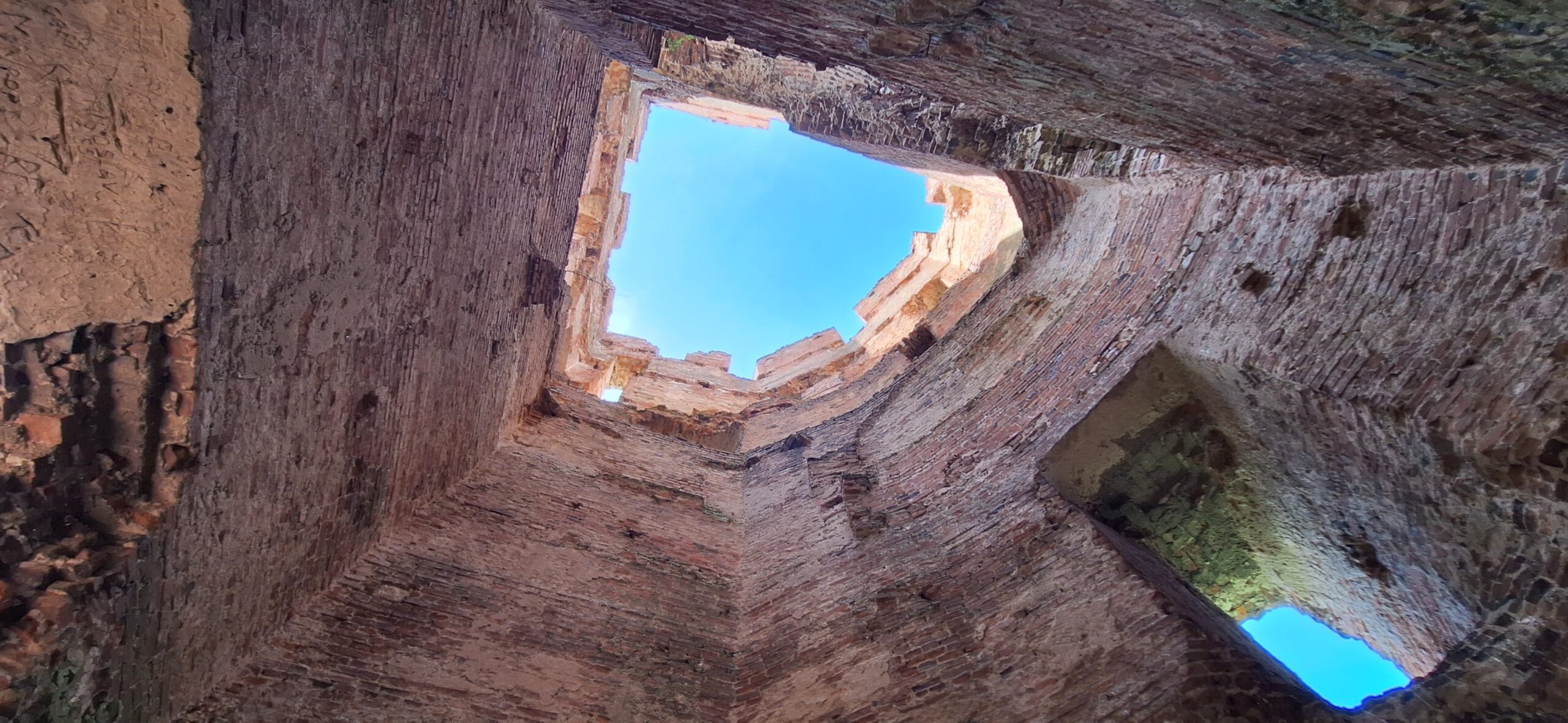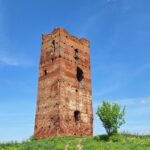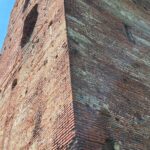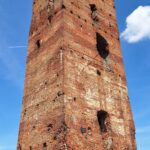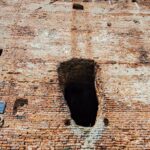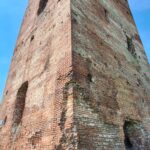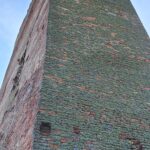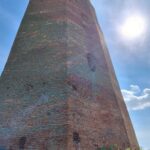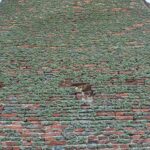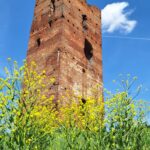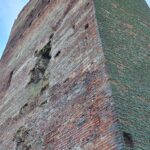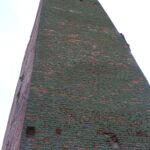Cheresig, Toboliu (Körösszeg, Vizesgyán) – Bihor County
Located right on the border between Romania and Hungary, Cheresig Donjon is one of the most spectacular historical monuments in Bihor County, if not in the entire country. Unique in the region, the massive tower continues to await the much-needed restoration.
Cheresig Donjon, the place where Ladislaus IV the Cuman was killed
Built from fired brick due to the lack of stone, the Romanesque donjon is believed to have been erected in 1242, immediately after the great Mongol invasion of Europe. It served as a watchtower, featuring a hexagonal layout and standing on a trapezoidal mound that remains visible to this day. The tower likely had five levels, reaching a height of nearly 25 meters, with walls over 4 meters thick. Historical records and archaeological evidence suggest that it was once part of a fortified complex with various annexes, external walls, and a defensive moat. The donjon’s first documented mention dates back to 1289, when its owner was Beke from the renowned Borsa family.
On July 10, 1290, the donjon became the site of a mysterious regicide. Caught in a conflict with Transylvanian Voivode Roland Borsa, King Ladislaus IV the Cuman met his end here. Chronicles recount that, despite being married to Elizabeth of Sicily, the young king preferred the company of his Cuman mistresses, especially Édua, Köpcsecs, and Mandula. Condemned by the Catholic Church for his pagan practices, Ladislaus was ultimately betrayed and murdered in his sleep by his beloved Cumans, led by Árbóc, Törtel, and Kemese (Kemence).
His death was avenged by his loyal palatine, Mizse, and Édua’s brother, Miklós, who ruthlessly executed the three Cuman leaders. According to legend, the Borsa brothers — Beke, Roland (Lóránt), and the future palatine, Kopasz Jakab — also played a significant role in the conspiracy against Ladislaus IV. In fact, Hungarian King Charles Robert of Anjou later accused Kopasz of regicide. Charles I of Hungary was also the one who ended the tyrannical rule of the Borsa dinasty in 1317 and subsequently spent time in the Cheresig fortress. By the late 14th century, King Sigismund of Luxembourg granted the citadel to the Ban of Mačva, Stephen Losonci (1390).
Cheresig Donjon: between destruction and failed restoration plans
After Losonci’s death, the Cheresig domain came into the possession of the Csáky family, which remained its rightful owner until the end of World War I. During the 1514 peasant uprising led by György Dózsa, the rebels, commanded by priest Lőrinc, pillaged the village but failed to destroy the fortress. However, what neither Dózsa’s rebels nor the invading Turks and Tatars (1598) could accomplish, the hajduks of Transylvanian Prince Stephen Bocskai finally did. Frustrated by the demands of the hajduks who had settled in Cheresig, the Csáky family expelled them, only for the infuriated hajduks to exact their revenge shortly after by setting fire to the fortress in 1653.
In the following years, local villagers dismantled the walls and annexes brick by brick. Only the donjon remained standing, later repurposed as a grain storage facility, as evidenced by a photograph taken by Elemér Varjú in the early 1930s. In 2014, a conservation project funded by Norwegian grants was rejected by the Romanian Ministry of Culture. Due to delays that would have exceeded the deadline imposed by the Norwegian financiers, the Cheresig Donjon was left without approval and without funding. What remained were only unrealized plans for preserving the tower, fencing it off, and refilling the defensive moat with water.
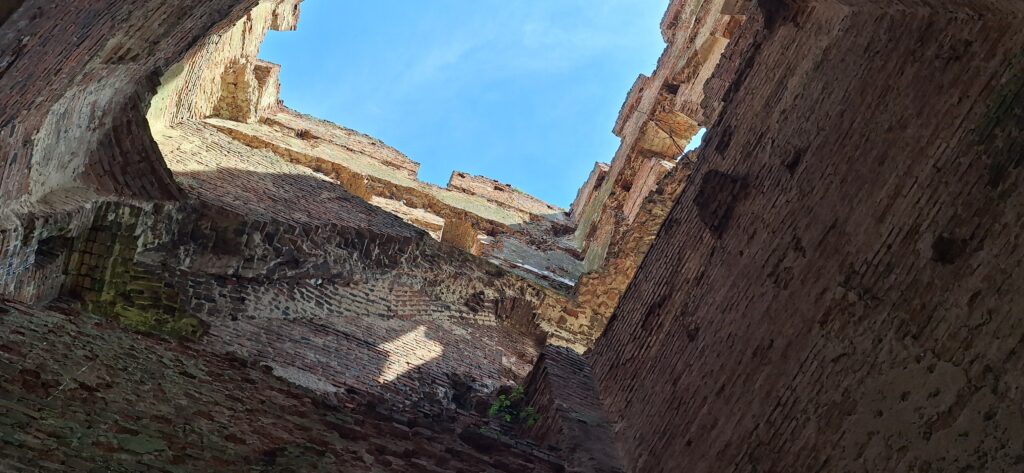
During our visit in the summer of 2024, the situation of Cheresig Donjon remained unchanged. A border police patrol was cooling off in the shade of the moss-covered northern wall, visibly surprised by our exploration. In its current ruined state, few tourists take an interest in the oldest Romanesque monument in Bihor.

